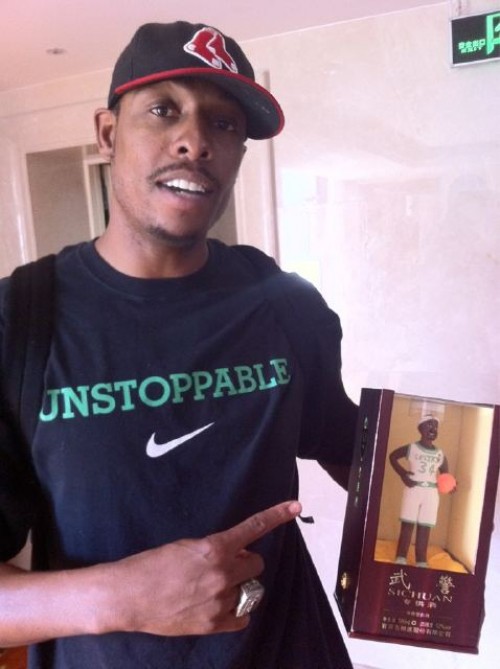Droolworthy chocolate and food studies events calendar
I was green with envy last weekend as tweets and Facebook posts poured in with updates from the Northwest Chocolate Festival in Seattle, WA. While I’ve never attended the festival, the largest gathering of bean-to-bar chocolate makers in the United States, it has been on my wish list since I started blogging. The schedule is packed with what look like excellent events — tastings, lectures, demonstrations, film showings, and just plain fun — many led by experts from the chocolate world. You can view the impressive line-up here [pdf]. Social media allowed many of us to experience the festival vicariously, at least in part. Check out the festival’s Facebook and Twitter pages or watch the trailer below to get a sense for the action.
The social media extravaganza surrounding the festival reminded me of how often I receive queries about chocolate and food events here at the blog. I keep a Google calendar of these events for my own reference and have decided to make it public via the “events” link on the top right of this page. There, you’ll find an ever-growing list of events in the chocolate and food studies world. A heavy emphasis is placed on events in the New England area where I live, but readers who live in other regions can still often find options closer to their own homes. Inclusion of an event on the list does not mean that I endorse the event or that I will attend it myself, but rather that I’ve identified it as a potential site for learning and research worth sharing with a larger audience. I strongly recommend double-checking all details with the hosting institution for each event, as I cannot regularly check for changes related to cancellations, etc, and some events do require entrance fees and/or early registration.
I’ll be working on the events page over the next few weeks to make it even more user friendly, hopefully with a dynamic map to aid in finding events in specific regions. In the meantime, I warmly welcome submissions of event recommendations. To fellow residents of the New England area — we’re fortunate to find ourselves in the midst of an especially vibrant food events scene. If you’re not hungry now, you will be soon!
Alexander and the Terrible, Horrible, No Good, Very Bad Halloween, by Jennifer Doody

Halloween by hanna horwath
The Halloween season often brings fond memories of tasty candy, fun costumes, and spooky nights. For author Jennifer Doody, it holds another significance altogether. In today’s guest post, Jennifer offers a tale of Halloween candy anguish and misfortune, an important reminder of the cultural differences that inform our tastes starting at a very young age.
————————————————————————————————————————–
Alexander and the Terrible, Horrible, No Good, Very Bad Halloween, by Jennifer Doody
Many years ago, my American family moved to Munich, Germany so my mother could pursue a career as an opera singer. My parents’ decision to not live on the nearby Army base was a deliberate one: as then-aspiring artists, progressives and intellectuals, they were determined that their four-year-old daughter would be immersed in this new and rich culture.
In the fall of my first year of school, my parents invited a boy from my German kindergarten class, Alexander Härting, to join us for Halloween. Back in the 1970s, cultural globalization wasn’t as widespread as it is now: aside from the Army bases, the only evidence of America’s presence was, of course, the golden arches of McDonald’s. Alexander had never heard of Halloween or the ritual of trick-or-treating, but his mother readily agreed, and once we threw together a standby cowboy costume for him, we were ready to go.
As Halloween wasn’t celebrated in Germany, we headed to the Army base to go door-to-door. At the first house, Alexander cautiously held out his bag, glancing over at me to make sure he was doing it right, and murmured a wary “Twick or tweet.” The woman smiled broadly and threw a huge candy bar into his bag, and another into mine. Alexander’s eyes, I remember, went as big as saucers: chocolate in Germany was much more of a special treat, something to be savored, and was often distributed in individual pieces. To have a six-ounce block of chocolate simply tossed into his waiting hands, not just once, but over and over, was the culinary equivalent of winning the World Cup.

Halloween Candy by slgckgc
When our bags sagged with sweet treasures, we returned to my parent’s apartment, where — in the finest American tradition — we dumped all our candy out onto my bed and tore into it greedily. Alexander grabbed the biggest candy bar of Hershey’s chocolate, tore off the wrapper, and bit into it with relish. He chewed joyfully, and then his face sagged, and he burst into tears.
It wasn’t his fault: he was used to German chocolate, of course. I munched pensively on my Snickers bar as he howled in outrage at the universe’s cruelty and betrayal. Shortly thereafter, his mother shamefacedly bundled him up and took him home, as no amount of cajoling or consolation could stop him from weeping. Thirty years later, it’s still the best visual image I have of instantaneous heartbreak and devastating disillusionment.
According to the Chocolate Museum in Cologne, as early as 1877, German chocolatiers set strict purity laws for their chocolate. The restrictions were meant to “protect their products from imitations and introduce binding quality restrictions.” In 1973, Germany was among the 50 countries to sign the first cocoa agreement, led by the International Cocoa and Chocolate Organisation (ICCO). America, the world’s greatest consumer of chocolate, declined.
Today, chocolate made in Germany must meet strict requirements for cocoa: 60% for dark chocolate, 50% for mild dark chocolate, 30% for whole milk chocolate, and 25% of milk chocolate (white chocolate — my personal favorite, although that’s another post! — is not required to contain cocoa mass at all, only cocoa butter). At the turn of the 20th century, Germany led all cocoa-consuming countries with “19,242 tonnes of processed cocoa beans… or 380 grams of cocoa beans were consumed per person annually.” In 2007, Germany ranked sixth in chocolate consumption, with each person in Germany eating 9.32 kg per year (the Irish were first, with each person in Ireland consuming 11.85 kg per year, followed by the Swiss, English, Belgians and Norwegians).
Every Halloween, I think of Alexander, and thank him for providing me with the best visual example of disillusion and despair –- not to mention the irrefutable realization that life is sometimes terribly, horribly, brutally unfair –- that I’ve ever witnessed. But I can’t blame him. To this day, when I’m traversing the streets of Boston and need a chocolate fix, I may make do with American chocolate in a pinch… but what I’m really craving is the creamy, “milk from the Alps” texture of Milka, or the rich diversity of Ritter Sport.
————————————————————————————————————————–
Jennifer Doody is a writer with 20 years experience in university news, communications, and academic editing, based in Boston, Massachusetts. Visit her professional site here to read more of her work.
Wacky World of Choc Wednesdays: Chocolate, China, and Basketball
Here’s something fun for sporty chocolate fans. Beantown favorite Paul Pierce, of the (17-time World Champion!!!) Boston Celtics, on a recent trip to China, was immortalized with a commemorative chocolate figurine.
On August 26, Pierce, also known as The Truth, tweeted a photograph of the figurine, captioning it “The chocolate Truth.” Here it is:

He also tweeted the following image of himself with his commemorative chocolate figurine:

This is totally awesome. It also raises a lot of questions. How is it that, in the past several years, basketball has gained such popularity in China that an NBA star’s visit would bring about a promotional figurine? Why might a figurine in China be made out of chocolate? (See also China’s Chocolate War.) Moreover, it seems plain to me, but others might not agree — racial factors are at play here, intentionally or otherwise, are they not? Put more simply, would Larry Bird’s figurine have been made out of white chocolate? For more on the complexities of chocolate and race, see Cadbury’s ill-fated advertising campaign in 2009. Oh, and then again in 2011. This is just the tip of the iceberg. How does this figurine exemplify or differ from the other ways that chocolate is used in ritual or commemoration? And, for those of you who experience a certain sadness when eating chocolate bunnies, would you do the humane thing and eat Pierce’s figurine head first?
Here are nearly five minutes of excellent reasons for Pierce’s commemoration:
While we’re at it, check out Pierce’s inspirational campaign:
Paul Pierce’s Truth on Health campaign empowers and encourages young people to lead healthier lives by providing them with the information, resources, and tools necessary to become more active and physically fit. To learn more, visit www.truthonhealth.org.
Yeah, the world of chocolate is wacky.

